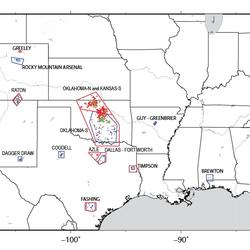Does the production of oil and gas from shales cause earthquakes? If so, how are the earthquakes related to these operations?
To produce oil and gas from shale formations, it is necessary to increase the interconnectedness of the pore space (permeability) of the shale so that the gas can flow through the rock mass and be extracted through production wells. This is usually done by hydraulic fracturing ("fracking"). Fracking intentionally causes small earthquakes (magnitudes smaller than 1) to enhance permeability, but it has also been linked to larger earthquakes. The largest earthquake known to be induced by hydraulic fracturing in the United States was a M4 earthquake in Texas. In addition to natural gas, fracking fluids and saltwater trapped in the same formation as the gas are returned to the surface. These wastewaters are frequently disposed of by injection into deep wells. The injection of wastewater and saltwater into the subsurface can also cause earthquakes that are large enough to be damaging. . Wastewater disposal is a separate process in which fluid waste from oil and gas production is injected deep underground far below ground water or drinking water aquifers. The largest earthquake known to be induced by wastewater disposal was a M5.8 earthquake that occurred near Pawnee, Oklahoma in 2016.
Learn more: USGS Induced Earthquakes
Updated Date: February 28, 2022













